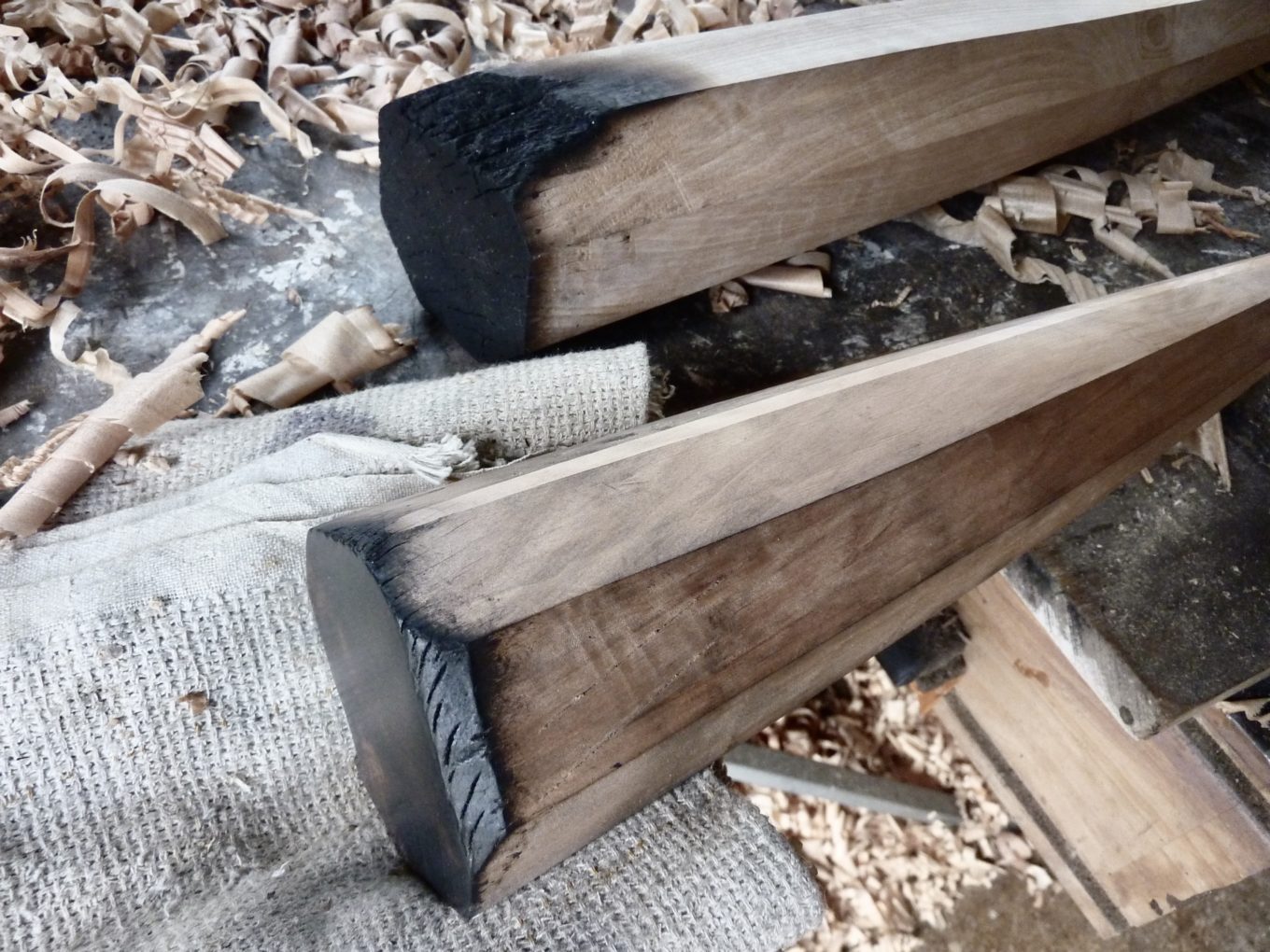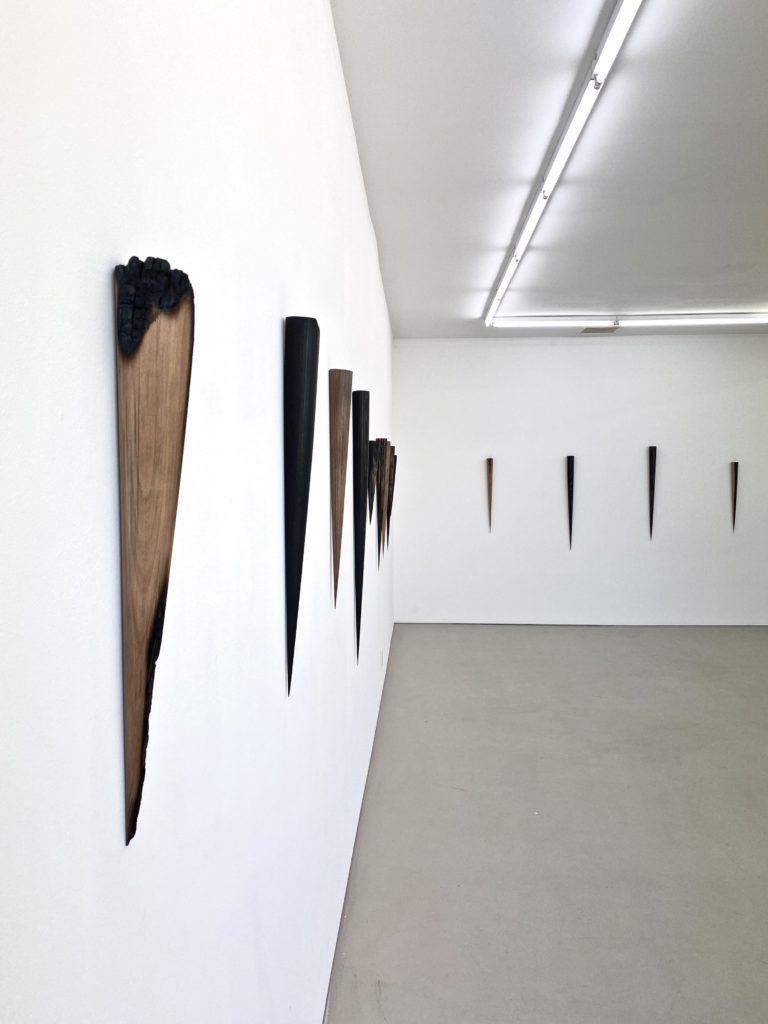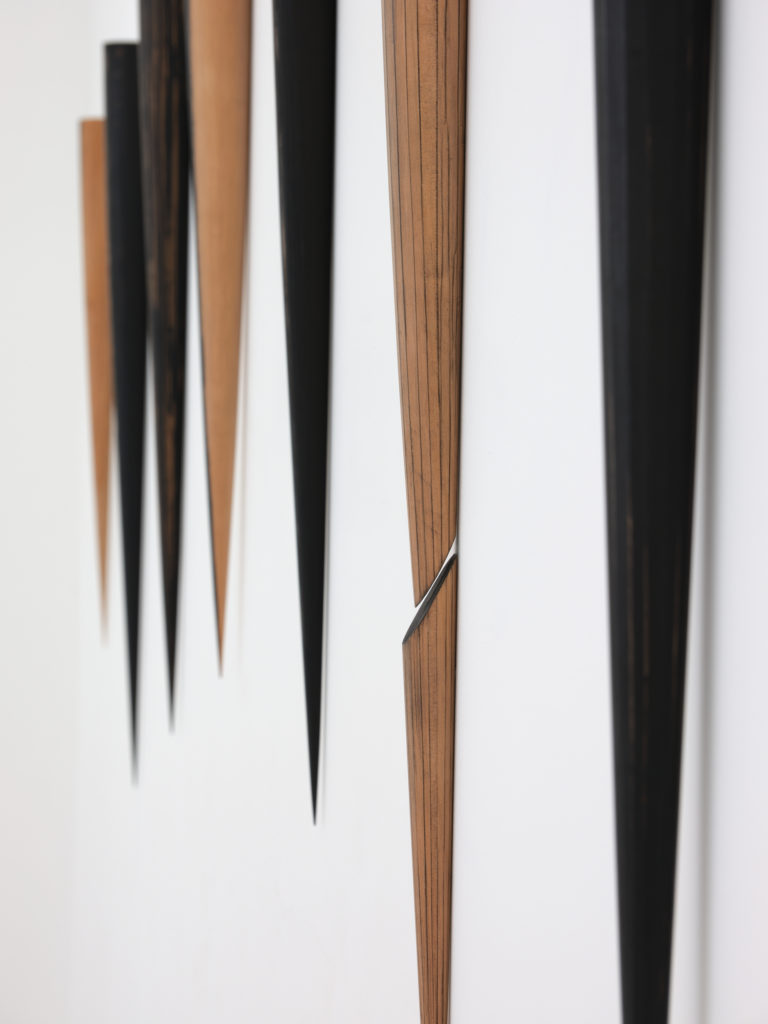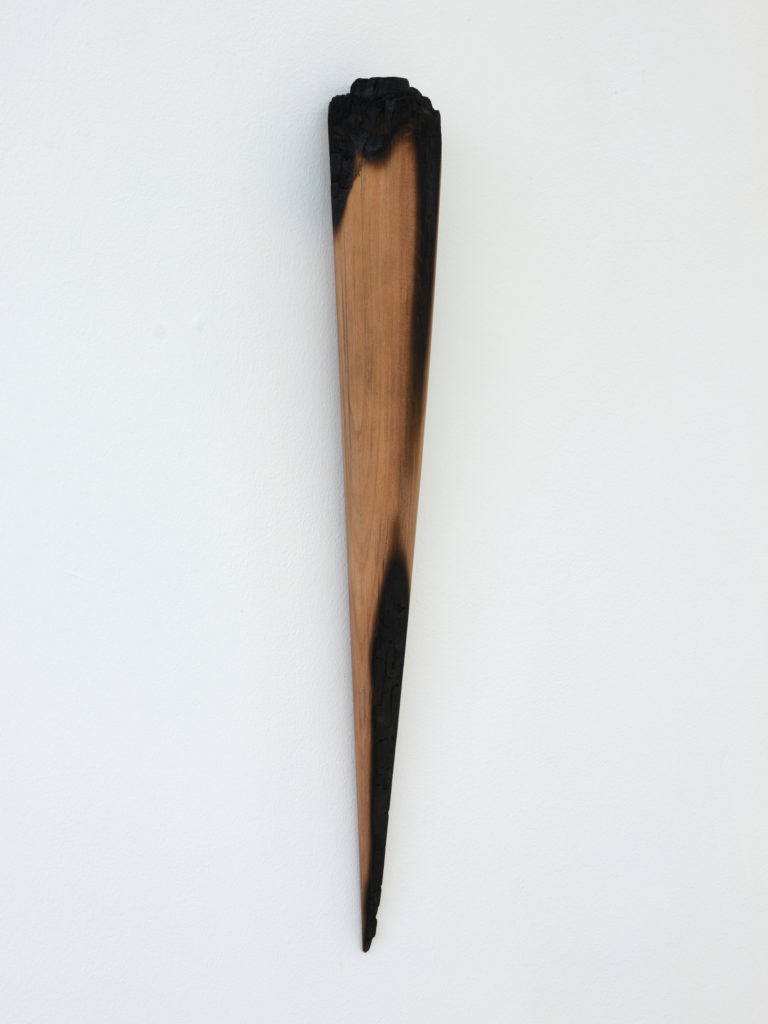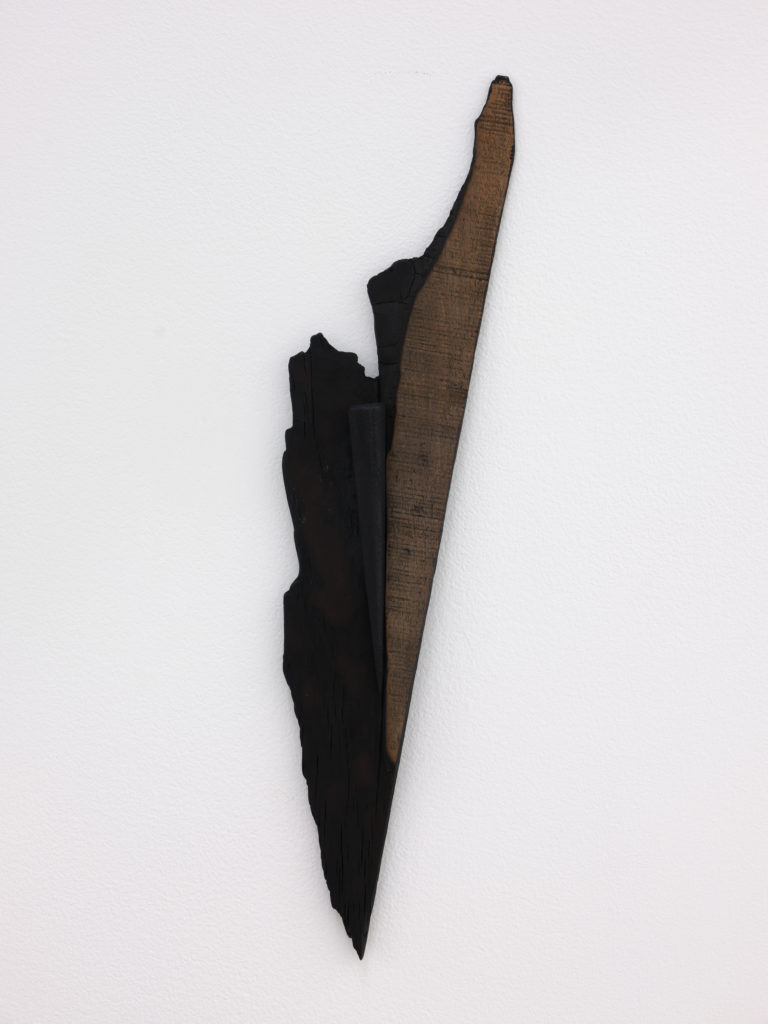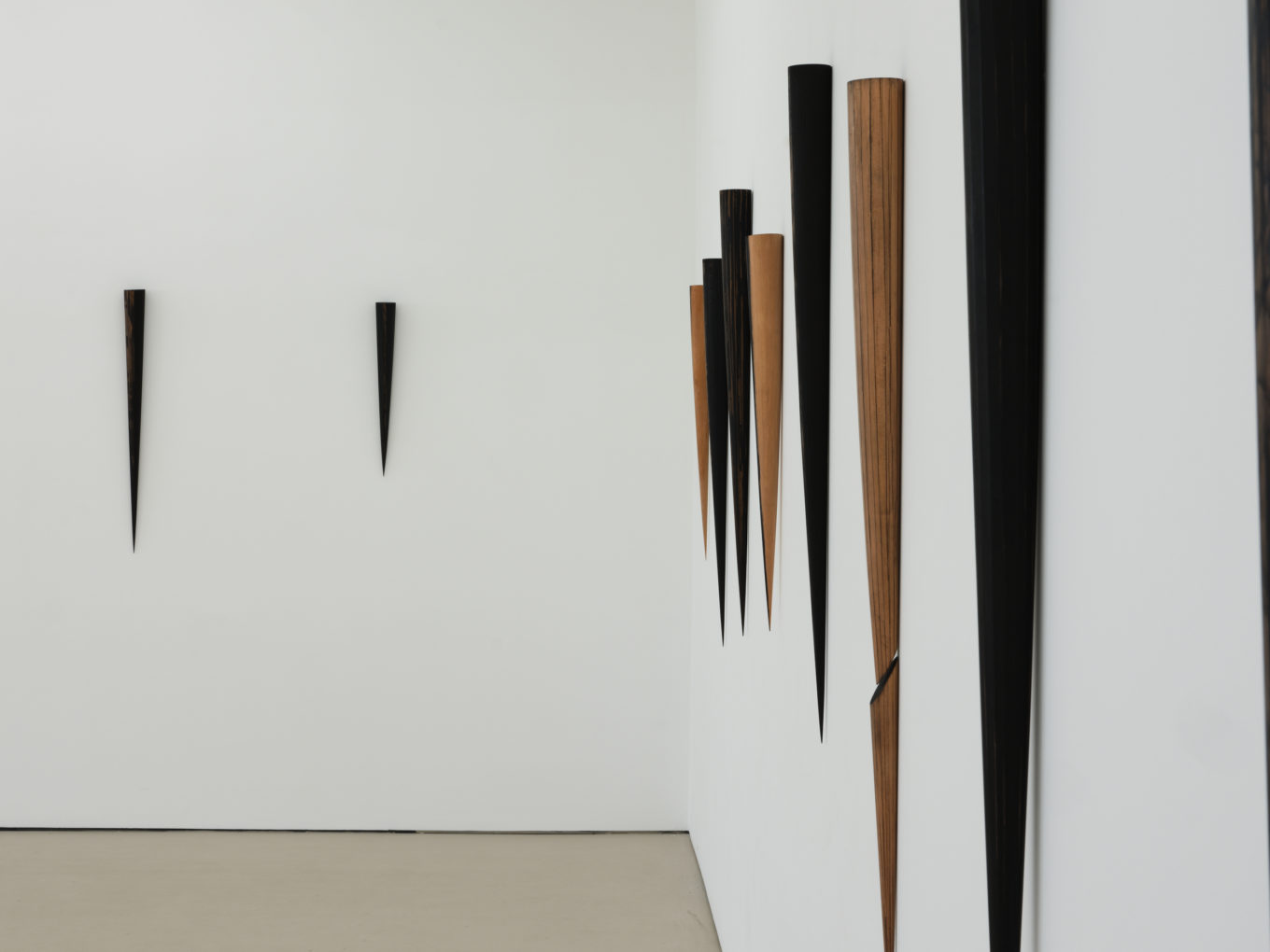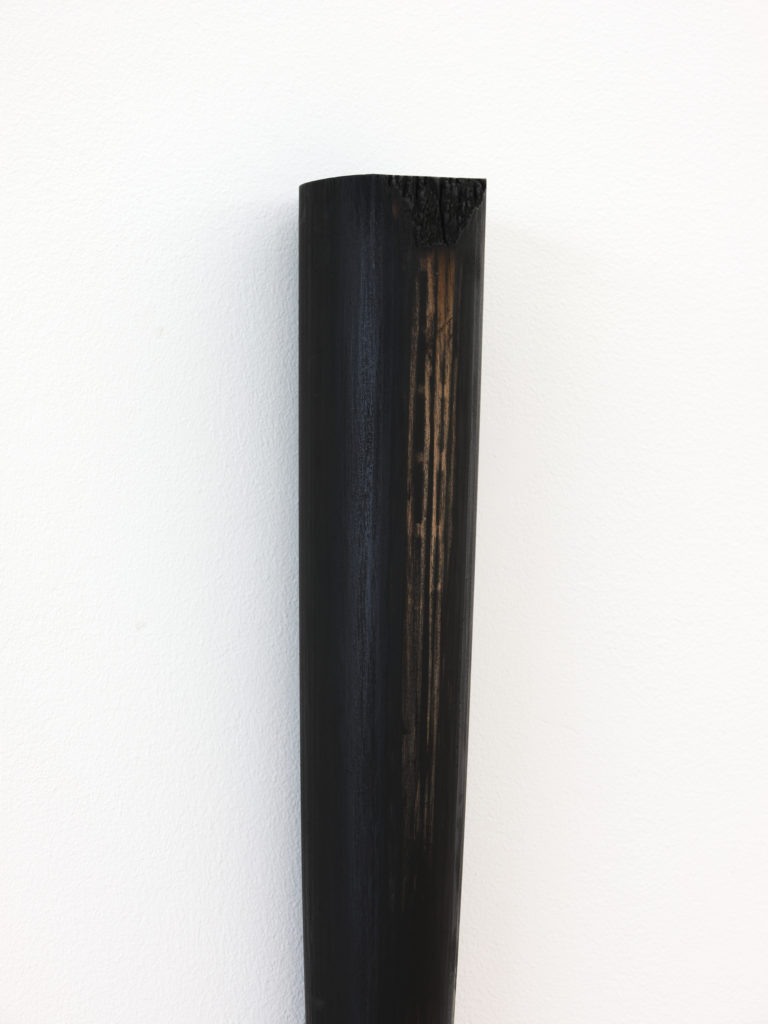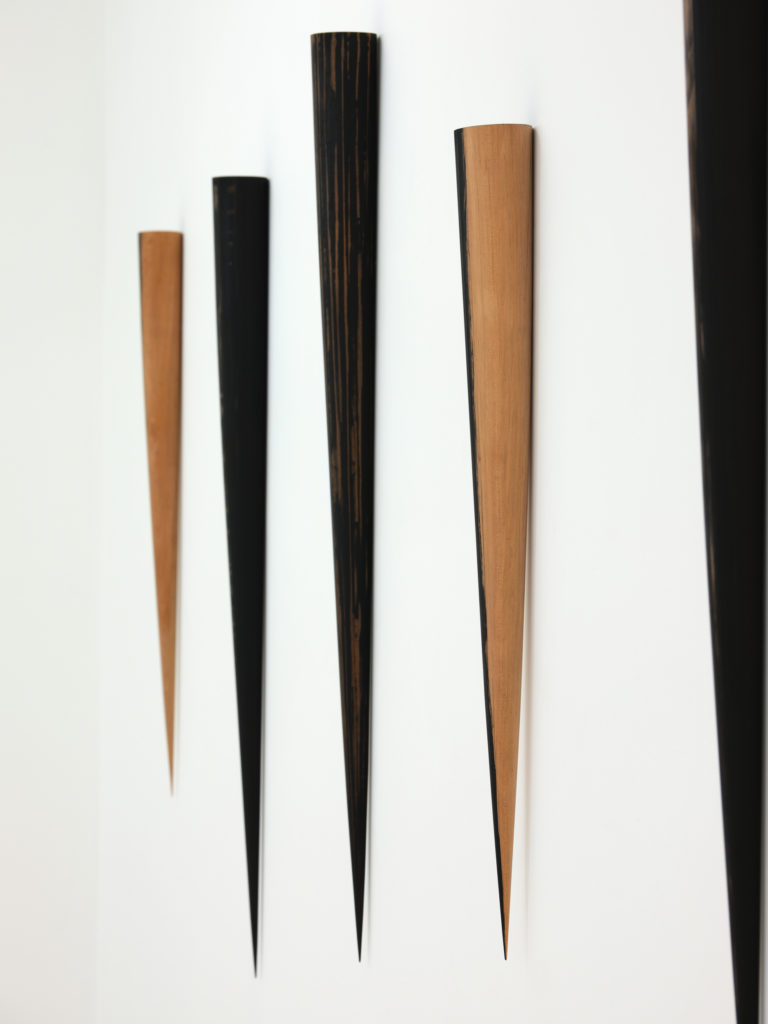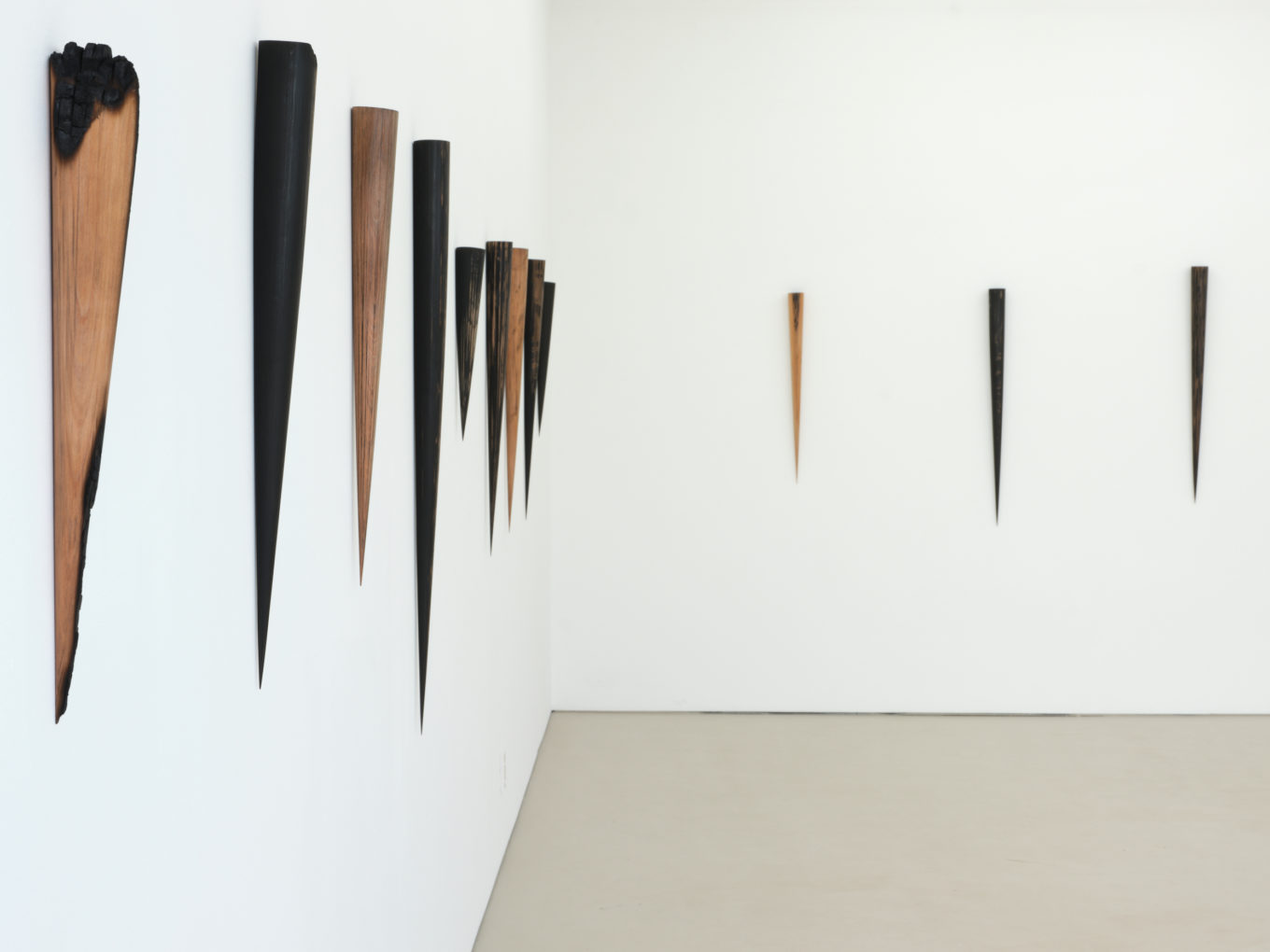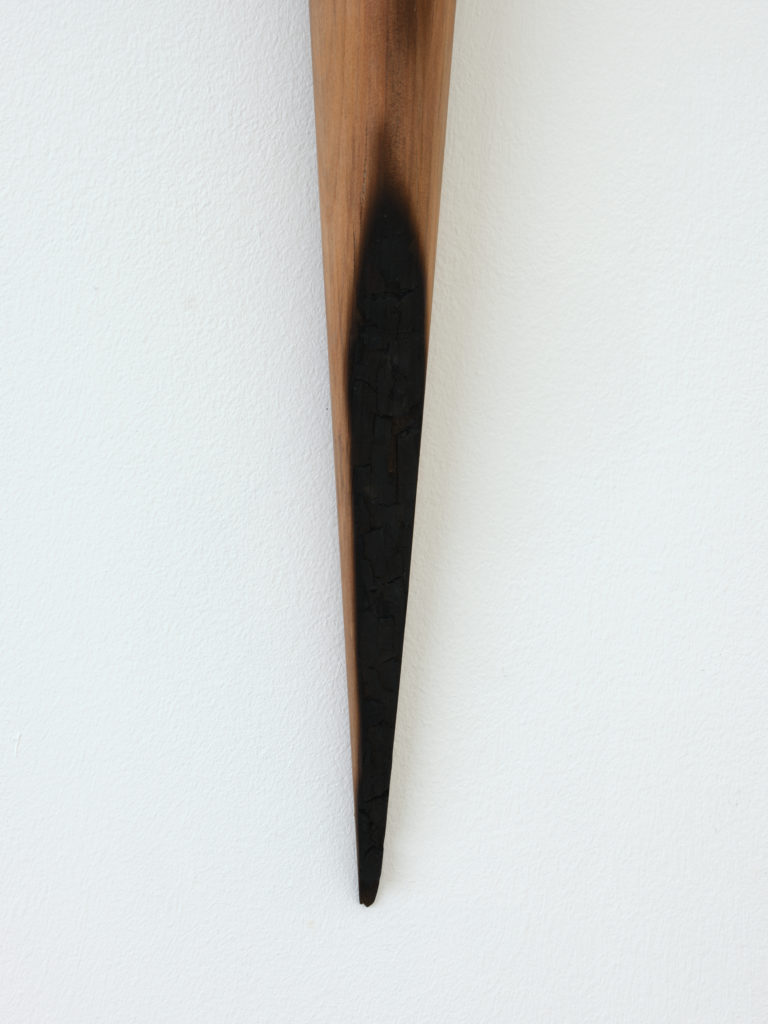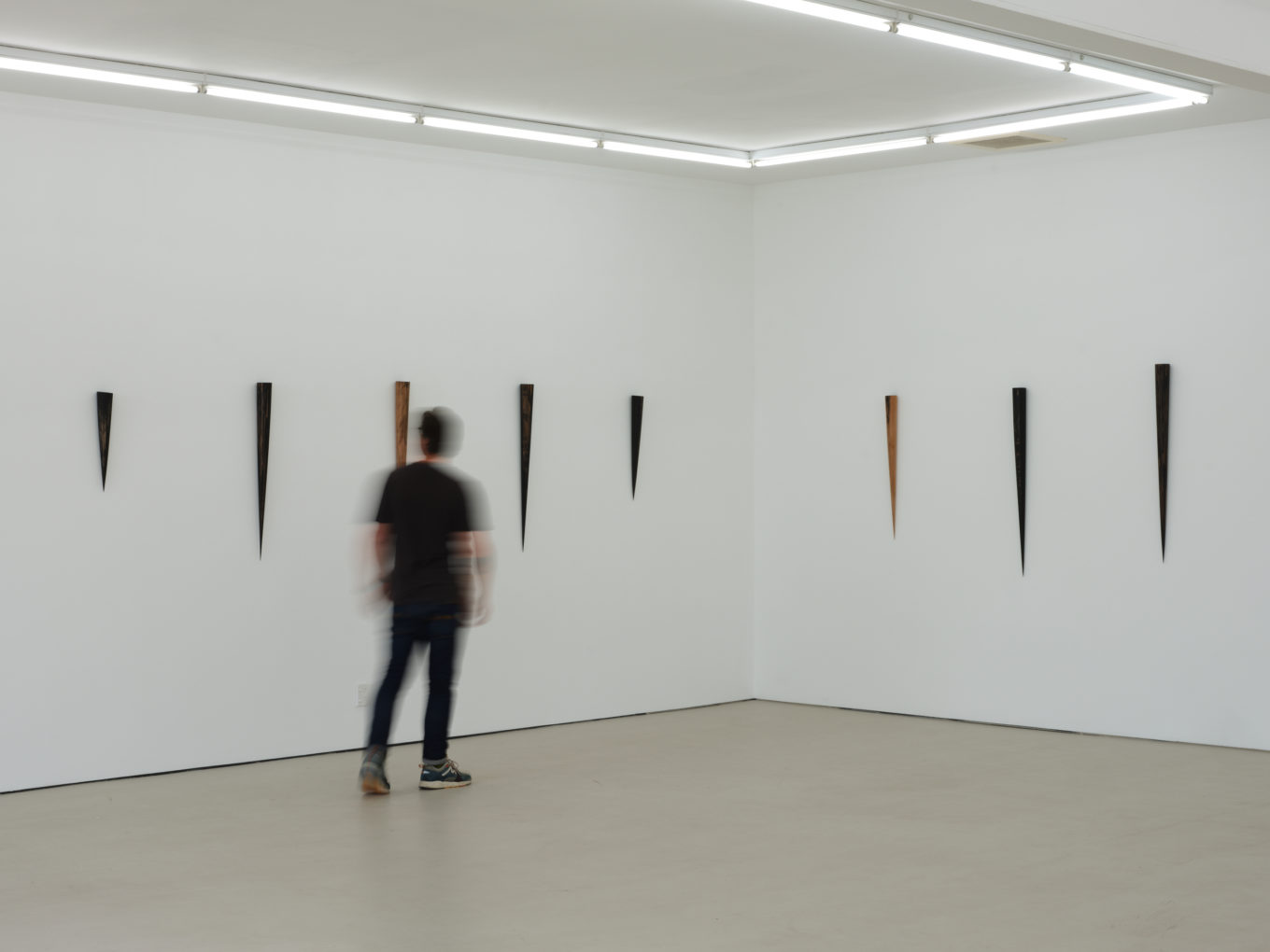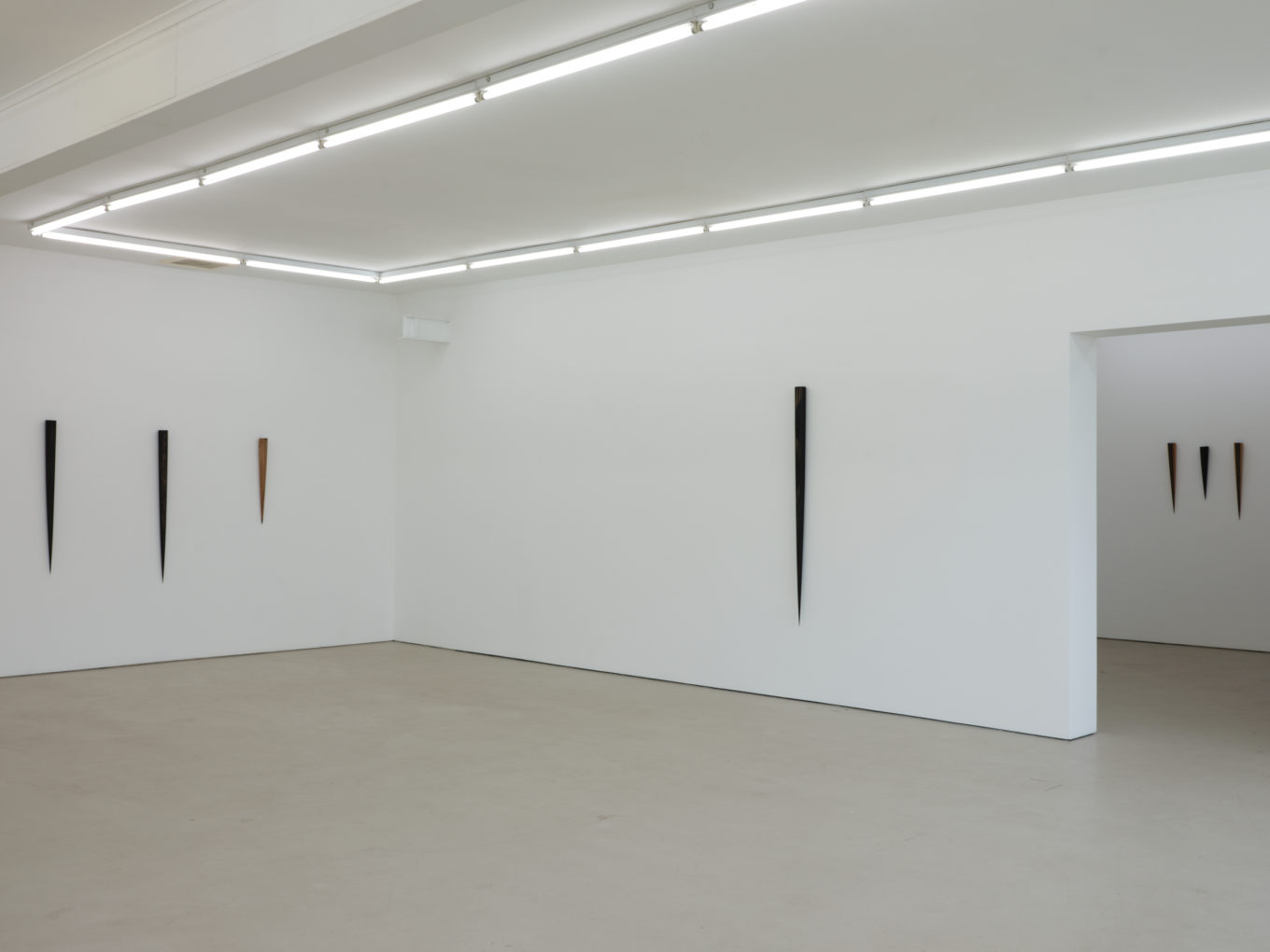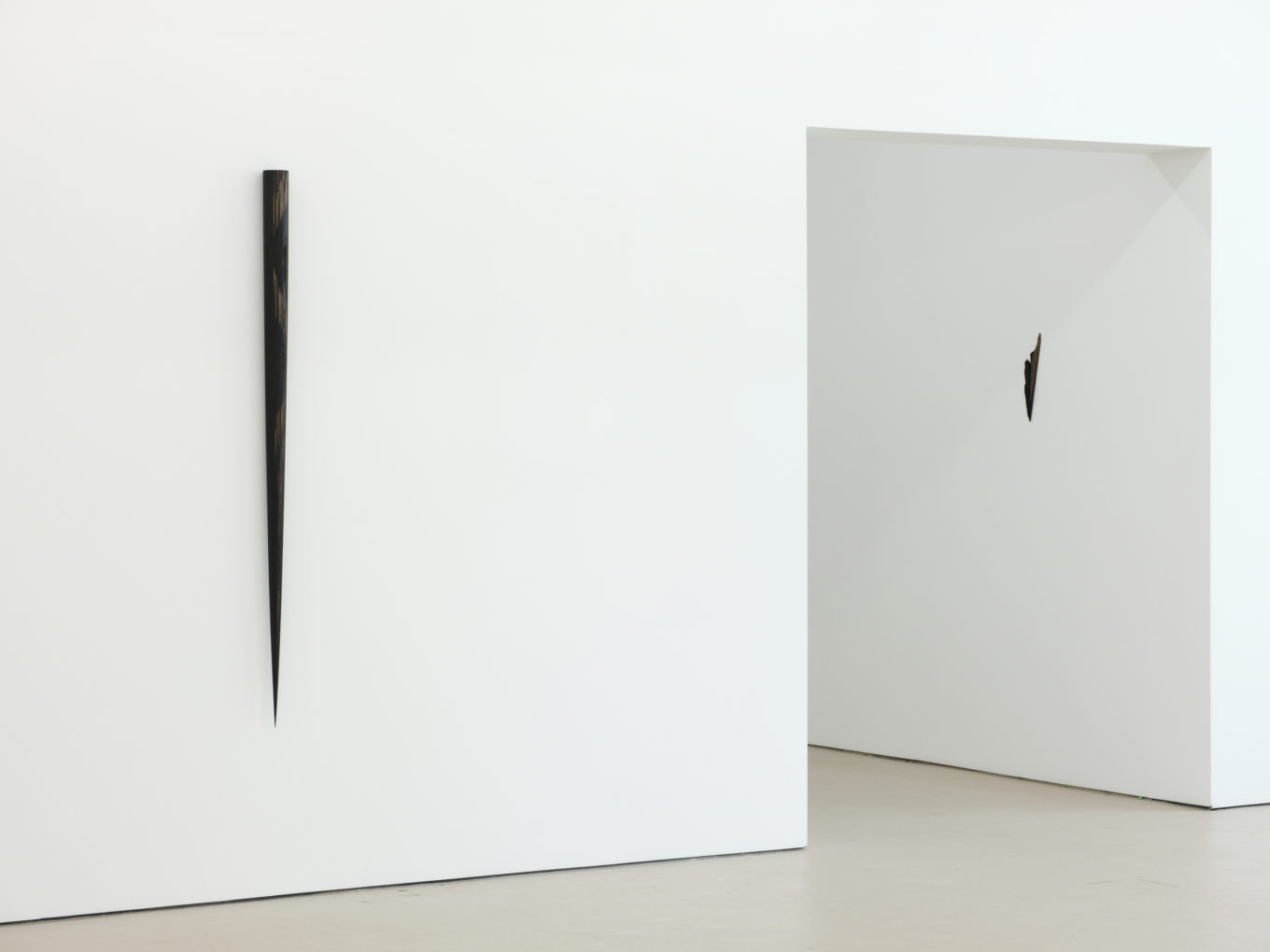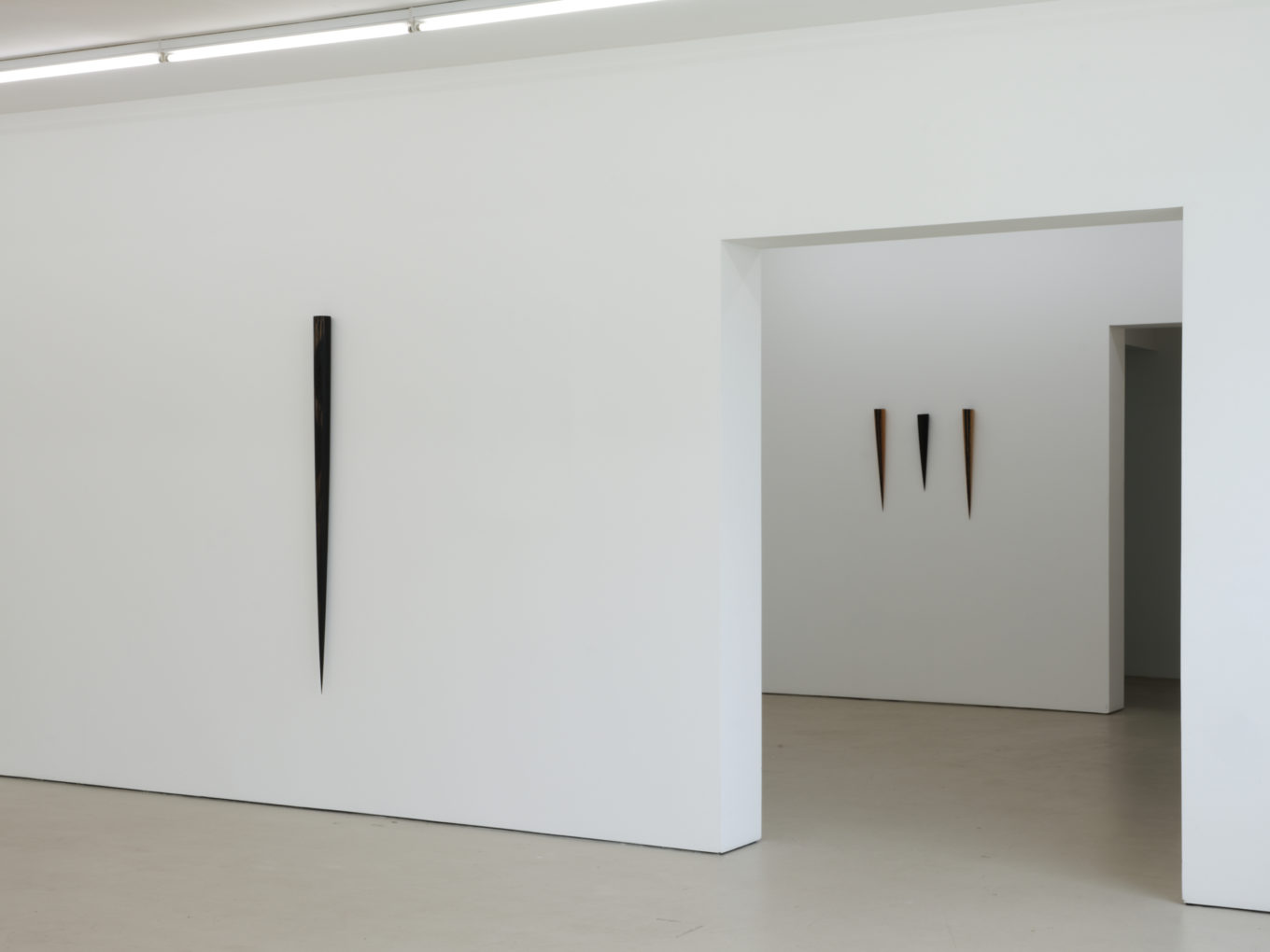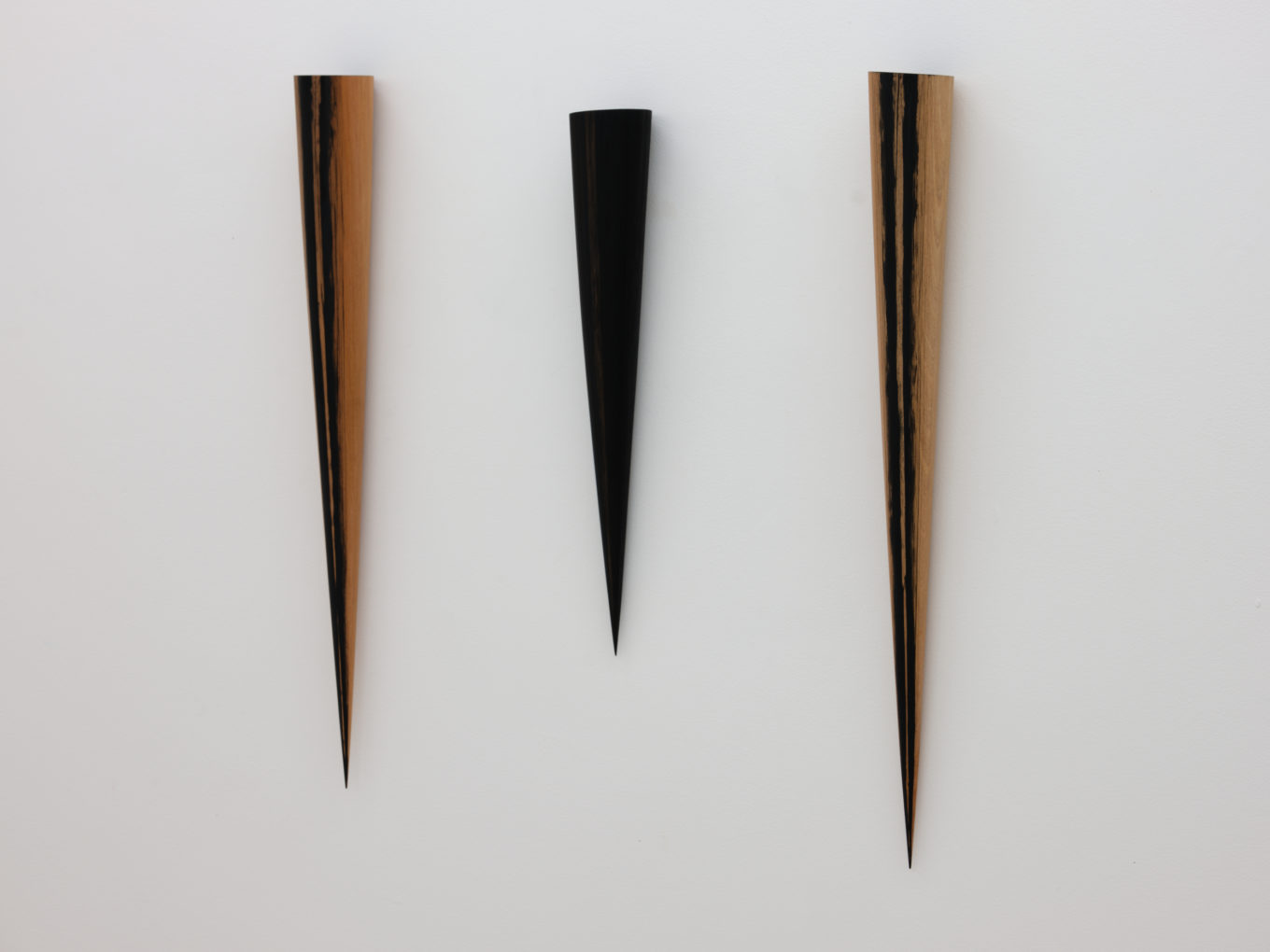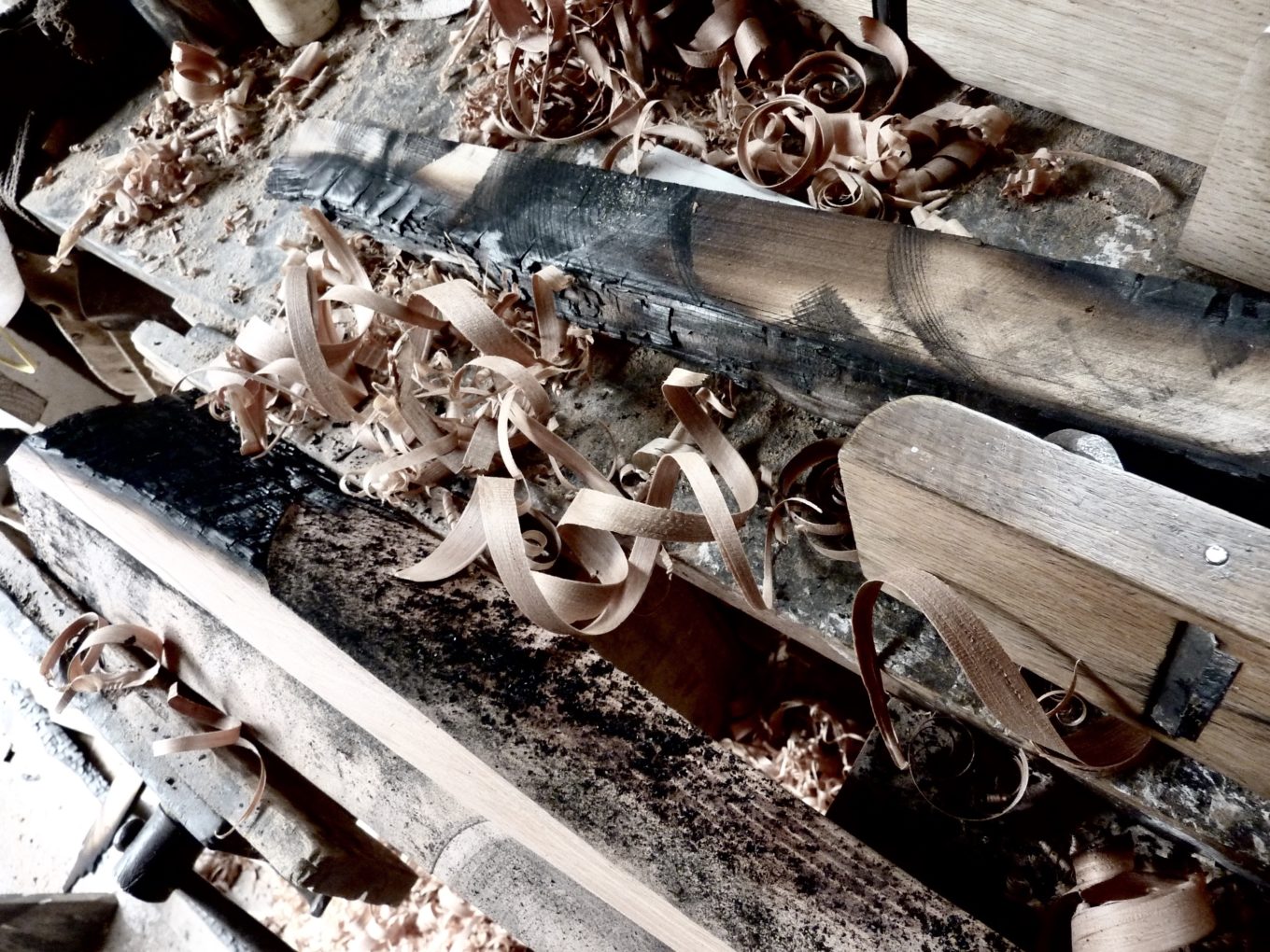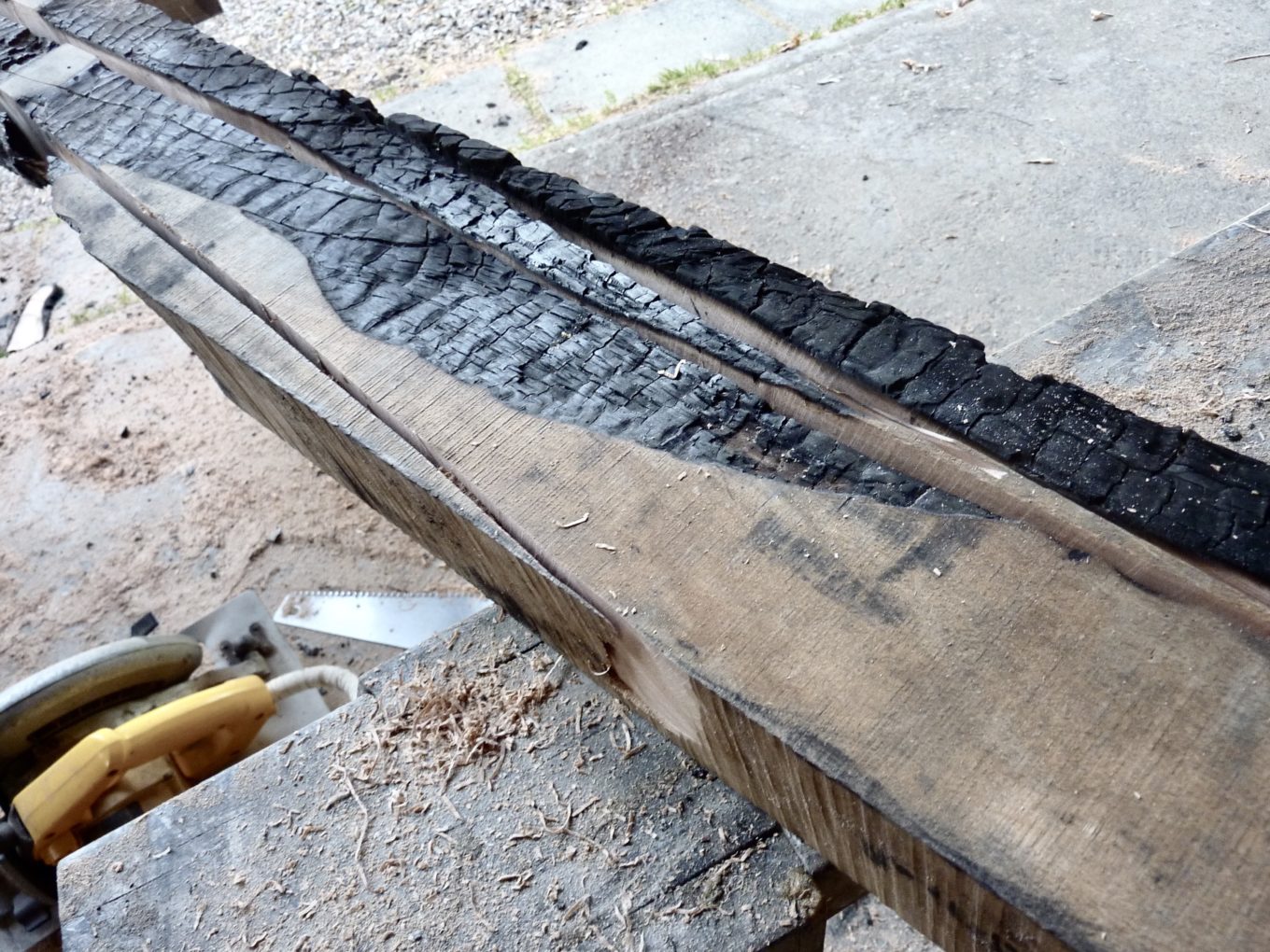Trish Clark Gallery is pleased to present Kazu Nakagawa’s third solo exhibition at the the gallery. The project artificial landscape takes 25 pieces of the native timber totara from a burnt house and Nakagawa’s painstaking and meditative hand carving fashions them into self enquiry: how to see contingency – what makes the boundaries of self and beyond? With this exhibition of new works, Kazu Nakagawa reminds us that his practice defies ready labelling, underpinned as it is by his fundamental philosophical positions, with his works emblematic of the Japanese concept of ‘ma’ – the space between, the distance between, the room between or around things. The extended duration of the contemplative process of hand-planing charred timbers during a period of global dislocations and individual solitude has brought to realization a body of work that meditates deeply, with both intensity and quietude, on the inherent imperfectability of life.
Born and trained in Tokyo, Nakagawa travelled to New Zealand for a one-year residency in 1986, by container ship so he could ‘feel the distance’ of the journey, and became a committed island-dweller in 1988, still living and working on Auckland’s Waiheke Island. His works present us with a tapestry of materiality (or often, seeming immateriality) that is determined by the conceptual underpinning of each work – he will employ any media as required as well as more evanescent materials, shade and sound, subtly traversing materiality, space, time and language. His is a conceptual and experiential consistency that the present moment delivers all there ever truly is.
Critics writing about his artworks address ‘absence’; ‘matter and nothingness’; ‘ambiguously elegiac’; ‘materiality becomes an imprecise notion’. Shying away from descriptions of his work as minimalist, Nakagawa says rather ‘I fall into another half [of my brain] which always makes things blur, so boundaries have less meaning. An architecture becomes a piece of paper or a piece of paper becomes an architecture. Several months of carving becomes a ‘blink’ of brush stroke. A moment becomes endless. It is actually a process of simplifying what I see, and in this way it is utterly incommunicable unless putting in an art form’.
Survey exhibitions of Nakagawa’s work have been held at Te Tuhi and The Dowse Art Museum. His work is represented in the Collections of The Dowse Art Museum, New Zealand Maritime Museum and Christchurch Art Gallery Te Puna O Waiwhetu, and in numerous private collections in Australia, UK, USA, New Zealand, and the New Zealand Embassy in Japan. Nakagawa has undertaken collaborative projects in the last 15 years, including with fashion designers, poets, composers, and film makers; the most significant being the Waiheke Library, awarded the Overall Supreme Award + Commercial Architectural Excellence Award in 2015.

